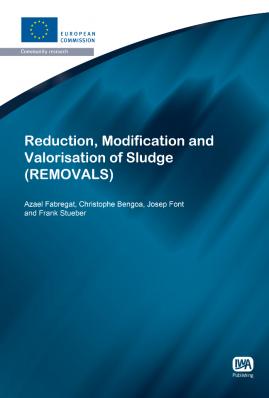 |
Reduction, Modification and Valorisation of Sludge
Reduction, Modification and Valorisation of Sludge
Editor(s): Azael Fabregat, Christophe Bengoa, Josep Font, Frank Stueber,

The adoption of the Urban Waste Water Treatment Directive requires sewage sludge to be subsequently treated and the Sewage Sludge Directive regulates the uses and properties of stabilised sludge for being either recycled or disposed. Both directives drive specific actions in two complementary ways.
Reduction, Modification and Valorisation of Sludge aims at developing strategies for the disposal and reuse of waste sludge. It aims to develop several processes for reducing both amount and toxicity of sludge, with simultaneous transformation into green energy vectors such as methane or hydrogen. Mesophilic and mainly thermophilic and autothermophilic conditions are explored as classical alternatives for sludge stabilisation, assuring sanitary conditions of the treated sludge. Valuable materials are obtained from sludge, such as activated carbons, which are used in conventional adsorption processes and in innovative advanced oxidation processes.
Guidelines are provided for technology selection in agreement with the geographic, economic and technical characteristics of the sewage plants, demonstration of the feasibility of new applications for the sewage sludge, manufacturing of activated carbon from sludge sewage as innovative recycling of sludge waste, and a deep understanding of the methods involved.
Contents
Reduction and stabilisation of the excess and toxicity of sludges in anaerobic conditions; Sludge stabilisation in autothermal conditions; Production of hydrogen from sludge; Utilisation of enzymes from sludge to optimise activated sludge digestion; Gasification of sewage sludge; Production of organic substrate from sludge for enhancement of nutrient removal; Advanced technology for the biological nitrogen removal of the reject water from the sludge dewatering systems; Minimisation of sludge production by utilisation of biological potential in membrane bioreactors; Destruction of organic compounds in sewage sludges suspensions by ultrasound and catalytic wet air oxidation; Production of activated carbon from sludge; Utilisation of activated carbon as catalyst in wet air oxidation; Utilisation of activated carbon as catalyst in AD-OX process; Utilisation of activated carbon in adsorption processes; Utilisation of activated carbon in biofilters for elimination of industrial waste gases
Also available as part of your Water Inteligence Online subscription
Publication Date: 15/03/2011ISBN13: 9781843393450eISBN: 9781780400846Pages: 232 |
Print:
|